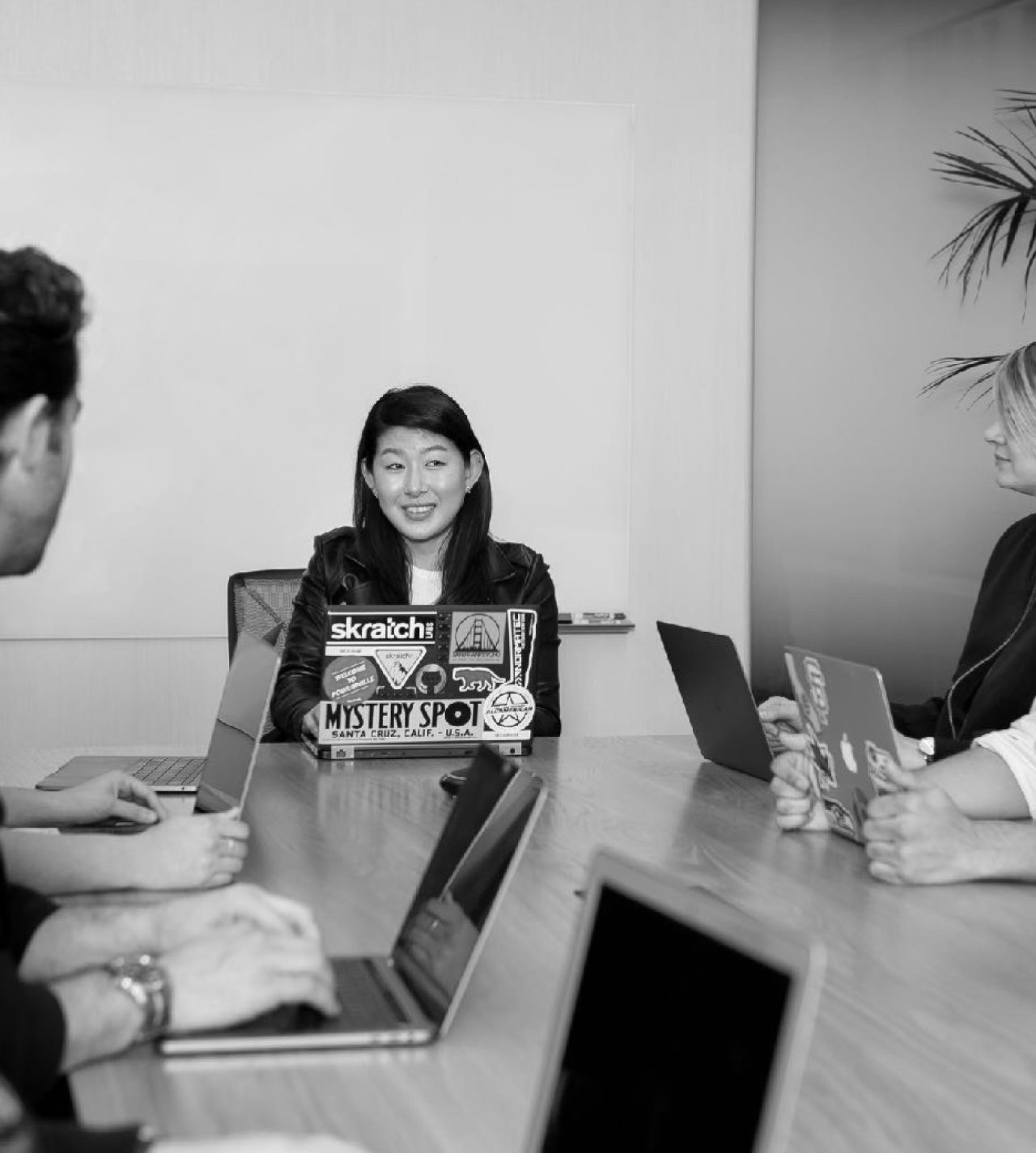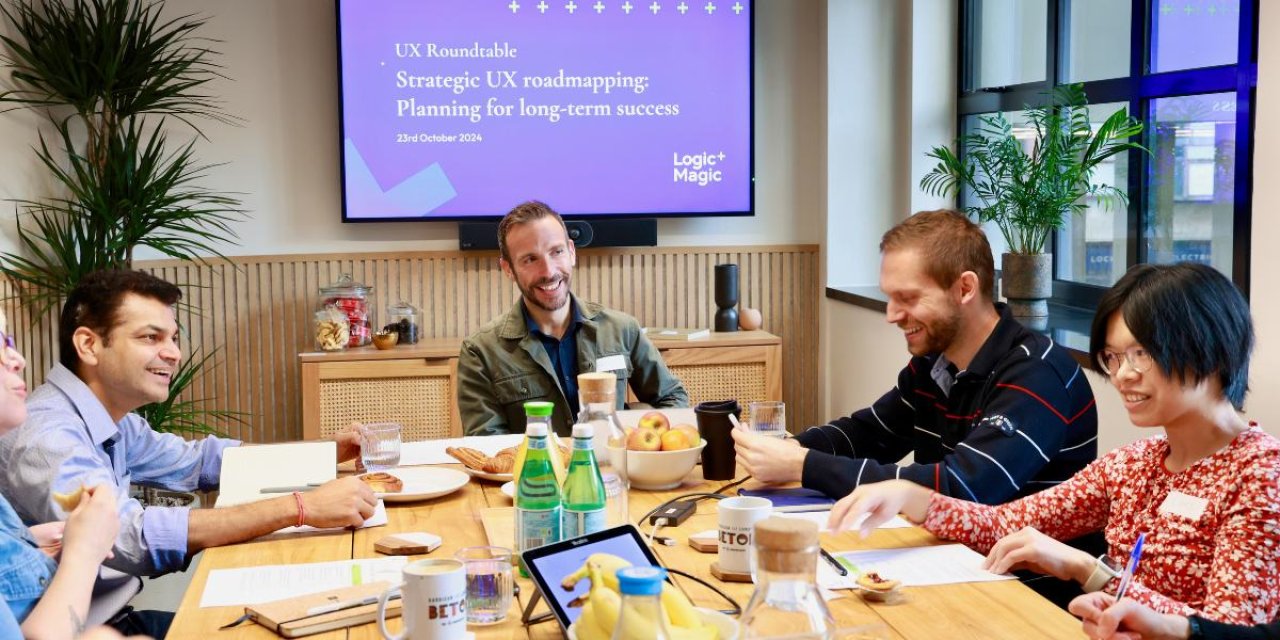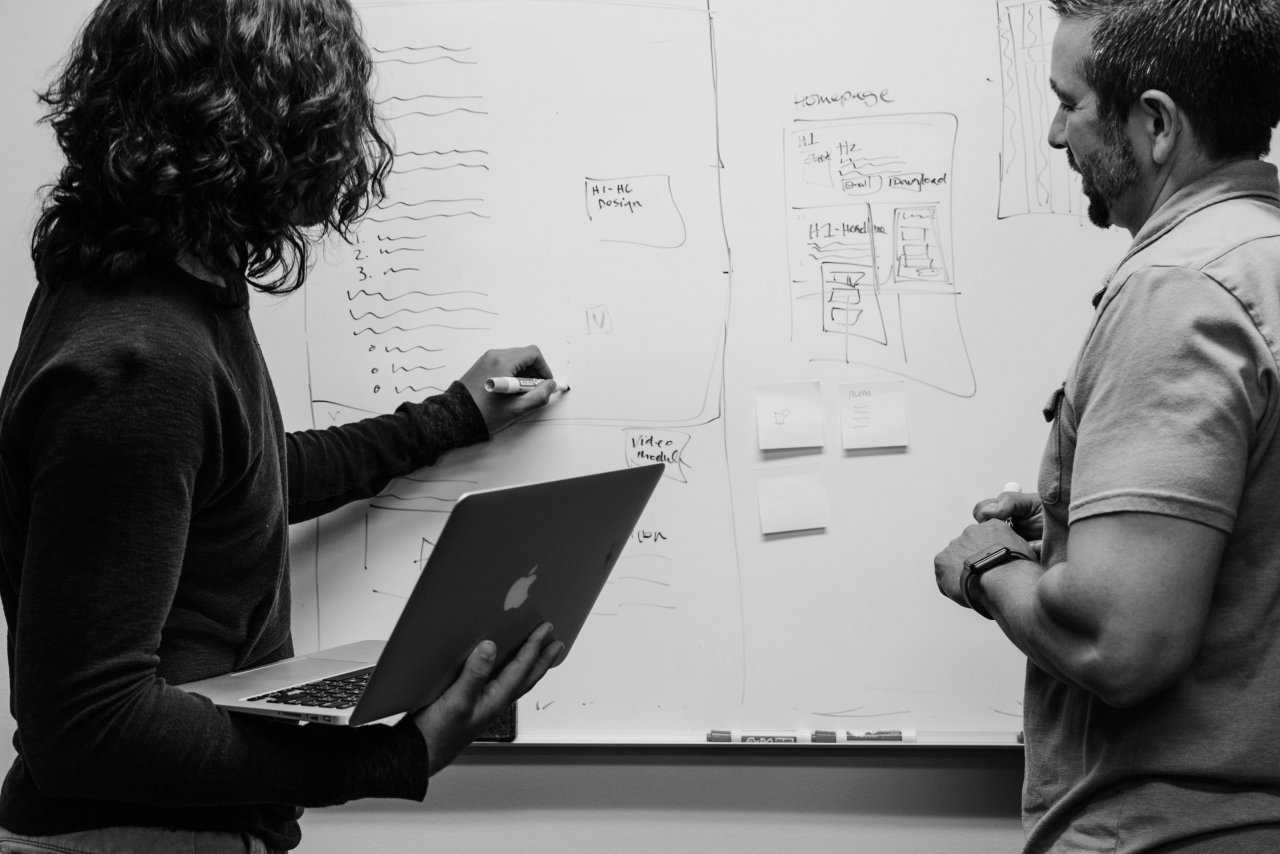In the latest series of Round tables, Andrew and Gareth were joined by 4 experienced senior UX leaders. On the morning, we shared experiences, challenges and perspectives on the unique challenges of managing and working within distributed teams. This article summarises the five key themes that emerged from that session with Matthew Davison, Paula Brezzo, Dave Alexander and Ciara Davey, Ph.D
Team + morale
“Not everyone on a Teams call is actively present in the conversation. When cameras go off, it can be very difficult to foster collaboration and discussion.”
In traditional work environments, junior team members learn by osmosis, absorbing knowledge from experienced colleagues through proximity and informal interactions. These unplanned learning moments and spontaneous collaborations can be hard to replicate in a virtual setting. When working remotely, it is crucial to maintain team morale and ensure that everyone is truly present and engaged during meetings. With cameras off and distractions lurking, it becomes challenging to foster collaboration and cultivate a sense of team unity. UX leaders must be proactive in creating a digital environment that encourages participation, learning, and the sharing of ideas. Techniques like setting clear meeting agendas, promoting active discussion, and checking in regularly with team members can help mitigate the disconnect that often occurs in virtual settings.

Culture
“UX is a uniquely human discipline and as deeply social animals, we lose so much when we're not physically together… tools can help us replicate some of that, but they can't replace it.”
Organisational culture has traditionally thrived on physical cues and shared spaces that reinforce company values and camaraderie. Remote work necessitates a shift in how culture is expressed and maintained. While digital tools can provide reminders of company values or encourage specific behaviours, they lack the visceral impact of a well-curated office environment.
Leaders need to explore new ways of fostering a positive and cohesive culture remotely. This can include encouraging employees to maintain work-life balance by respecting boundaries around work hours, celebrating achievements through virtual events, and using collaboration tools to enhance team interactions. By embedding these cultural values into daily practices, organisations can create a virtual environment that feels supportive and inclusive, even when employees are physically apart.

Quality + consistency
“It has been hard to replicate the power of getting stakeholders physically into a room.”
Maintaining high standards of quality and consistency in UX design is a perennial challenge, further complicated by remote work environments. In physical settings, face-to-face meetings allow for richer discussions, immediate feedback, and collaborative problem-solving.
Remote settings can inadvertently lead to fragmented communication, where individual biases may creep in and affect the integrity of research methods. UX leaders must establish rigorous quality control processes that ensure the consistency and reliability of outputs. This might involve creating standardised guidelines for research and design practices, facilitating regular peer reviews, and using digital tools to document and track design decisions. By maintaining these standards, UX teams can ensure that their work remains unbiased and accurately reflects user needs.

The office
“Team interactions and collaborative exercises mean that the days feel fresh and different compared to home working.”
While remote work has become the new normal, the office still holds value as a hub for collaboration and creative exchanges. Many organisations adopt a hybrid model, combining remote work with in-office time to capitalise on the benefits of both environments.
For UX leaders, the challenge lies in maximising the value of time spent in the office. This involves planning in-person meetings and workshops that promote team interactions and encourage creativity. These face-to-face sessions should be strategically designed to complement remote work, fostering team cohesion and reinforcing the sense of belonging. By utilising office time effectively, teams can enhance morale, improve the quality of work, and maintain strong interpersonal connections.

The Craft
“Project timelines can be tight, and screen design takes prominence over strategic UX practices.”
In the fast-paced world of UX design, the pressure to deliver quick results can overshadow the importance of thorough problem-solving and strategic thinking. Remote work environments can exacerbate this issue, as teams may be tempted to skip the essential steps of understanding user needs and jump straight to designing outputs.
UX leaders must encourage their teams to prioritise problem-finding and problem-solving before diving into design. This involves dedicating time to research, user testing, and iterative design processes. By emphasising these foundational elements, UX teams can produce more meaningful and effective solutions that truly address user needs, rather than simply focusing on aesthetic outputs.

In Summary
The recent roundtable discussion with seasoned UX leaders illuminated the multifaceted challenges of managing distributed teams in a remote world. The key themes discussed highlight the need for intentional strategies to navigate the complexities of remote work. UX leaders must actively foster engagement and learning, find innovative ways to express and maintain culture, uphold rigorous standards of quality, and optimise the use of both remote and in-office environments. By doing so, they can empower their teams to not only adapt to remote work but also excel in delivering exceptional user experiences.






